

Table of contents
- Large variety of tomatoes
- Old tomato varieties have proven themselves for centuries
- Advantages of historical tomatoes over modern breeds
- Local Breeds
- Old tomato varieties for every location
- Particularly healthy: wild tomatoes
- Particularly tasty old tomato varieties
Lycopersicon esculentum, as the tomato is known in botanical terminology, came to Europe as a cultivated form. Aztecs and Incas have been growing the vegetable for more than two thousand years as a food and medicinal plant. Since the 18th In the 19th century, numerous seed-proof varieties have also developed here, whose taste characteristics make them stand out from the mass of modern industrial breeds.
Large variety of tomatoes
The legendary "Holland tomato" - grown industrially in huge greenhouses, mostly red and round and almost tasteless - can hardly be found in the supermarket anymore. Modern varieties are increasingly being bred for taste again, but they still have serious disadvantages: the lack of variety is one of them. The historical tomato world has countless shapes, colors and flavors to offer. Whether salad tomatoes, plum tomatoes, beefsteak tomatoes, cocktail tomatoes, gravy tomatoes (such as the famous 'San Marzano' tomato) or dried tomatoes: the fruits can be not only round, red or yellow. There are also striped, green-brown, purple, orange, or pink varieties, as well as egg, heart, bottle, ribbed, or flattened varieties. They taste juicy, floury, fruity, sweet or sour, like potatoes, are soft or firm, weigh five or 500 grams.
Old tomato varieties have proven themselves for centuries
The probably oldest German tomato variety is called 'Lucullus'. The tried and tested, early-ripening variety was at the beginning of the 20th century. It was a widespread commercial variety at the beginning of the 19th century, but today - like so many historical tomato varieties - no longer has a commercial license for economic reasons. However, their seeds can still be purchased in specialist shops, and new plants can always be grown from seeds you have won yourself. 'Lucullus' has round, red fruits that begin to ripen about 150 to 190 days after sowing. Although they are not as firm as today's varieties, they are very tasty and can be wonderfully grown in the home garden. They are suitable for both outdoor and indoor cultivation. Among the yellow tomatoes, the legendary 'Golden Queen' is probably one of the oldest varieties.
Advantages of historical tomatoes over modern breeds
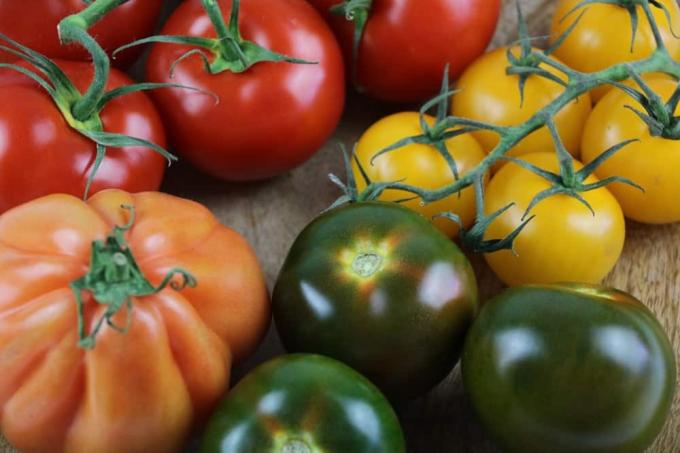
In English, the historical or old tomato varieties also known as "heirloom tomatoes", which means something like "heirloom tomatoes" in German. Some of these varieties have been passed on from one generation to the next for centuries. They are always true to their seeds - a distinguishing feature and a major advantage over old varieties the modern F1 hybrids - and have been ranked for appearance, taste, disease susceptibility and suitability for cultivation selected. Today, these often local treasures are both a cultural asset from days gone by and living genetic material for future plant breeding: a precious treasure that we must preserve.
Advantages of old tomatoes at a glance:
- seedproof
- Seeds can be collected and propagated by yourself
- great variety in shape, color, size and taste
- often very robust against various diseases
- tried and tested over centuries
- valuable genetic material
Tip:
Many breeders have attempted to create a strain resistant to the dreaded late blight. So far, no one has succeeded. Although many of the old varieties last for a certain period of time, they can still become ill in humid summers. So far there is only one really effective remedy against this tomato disease: protect the heat-loving plants from rain and excessive moisture.
Local Breeds
The tomato came in the 16th From South America to Europe in the 19th century, it was initially only cultivated as an ornamental plant for many centuries. Only from around the age of 18 or. 19. In the 19th century, vegetables were increasingly bred and cultivated for consumption. Initially, countless local varieties were created, some of which were only bred in one area or even by one family. An example is the large-fruited, yellow-orange 'Schellenberg's Favorit', from a family of the same name came from near Mannheim and came to the USA with American soldiers in the post-war years should. For this reason, many of the old varieties are not suitable for cultivation in different climate zones, since they are specially designed for the were selected according to the local climatic and geographical conditions and adapted perfectly to them have.
Old tomato varieties for every location
It's good that there are so many different varieties. The right tomato can be found for every location. Early maturing varieties are just the thing for regions that are not so warm and can only be planted later. Their ripening time is shorter, so that the fruits can definitely ripen by autumn. Old tomatoes such as 'Lily of the Valley', 'Early Yellow Striped' or 'Homosa' are perfect for rather harsh regions and cool summers. By the way, tomatoes of the same variety taste completely different in different growing conditions, so when choosing, don't just look at the Description of the variety should go - feel free to try out different old tomato varieties, such as these based on the local conditions you have react.
Particularly healthy: wild tomatoes
Wild tomatoes are completely unprocessed varieties that have been able to retain their natural character and taste. These varieties are often very healthy, robust and vigorous. The fruits are formed in large numbers and ripen quickly, but are very small. A typical representative of the robust wild tomato is the currant tomato, which is available with both red and yellow fruits. These measure only about one centimeter in diameter, but are very cute and especially popular with children. Wild tomatoes grow very lush, about 150 to 200 centimeters high and just as wide. They also form many stinging shoots, which do not have to be removed: pinching has no effect on the size of the fruit or the harvest.
Other recommended wild tomatoes:
- 'Yellow cocktail tomato': fruity-sweet, pear-shaped fruits, one to three centimeters in diameter
- 'Orange wild tomato': fruity-sweet, round fruits, two to three centimeters in size, resistant to bursting
- 'Wild tomato pink': very small, fruity-sweet fruits, thin skin
- 'Red Murmel': robust, high-yielding variety with round, red fruits
Particularly tasty old tomato varieties

In addition to the wild tomatoes already mentioned - which are not cultivated - the following are suitable old tomato varieties due to their insensitivity and their taste especially for cultivation in the home garden or. in the greenhouse. In addition, the varieties presented here are those that require comparatively little care.
'Bern Roses'
It is not known whether this very old Swiss tomato variety actually comes from Bern. The fact is, however, that their highly aromatic fruits are wonderfully formed even in cool summers and at higher altitudes. The robust stake tomato, which grows to a height of around 160 centimetres, should be grown outdoors if possible and needs a rain cover. The round, somewhat flattened fruits measure between five and ten centimeters in diameter.
Tip:
The 'Berner Rosen' are not particularly productive. For this reason, there has been a new breed of the same name for several years, which yields significantly more. However, their aroma does not come close to that of the original variety. So when you buy seeds, make sure you know which of the two varieties you get.
'Brandy Wine Pink'
This very old beefsteak tomato comes from the USA. It is characterized by its high yield and the large, firm-fleshed fruits. These can weigh between 300 and 700 grams and are very juicy and aromatic.
'De Berao'
This is a very robust variety that is resistant to late blight and late blight, and is sometimes wrongly known as 'tree tomato'. The stick tomato grows over three meters high and produces numerous oval fruits that can be red, yellow, pink or dark. Harvest time is between mid-July and late October.
'Yellow Pear'
This very vigorous cocktail tomato branches very strongly and develops many stinging shoots. The elongated, yellow fruits are between two and four centimeters in size and ripen in umbel-like infructescences, each of which can hold up to 30 fruits. The fruity-sweet tasting tomatoes ripen from mid-July, but tend to burst open. The variety, which is believed to have originated in Russia, can grow very tall – up to 250 centimeters – and therefore always needs support.
'Green Zebra'
This tomato variety fascinates with its decorative, green-light green striped fruits, which can also turn yellow-orange depending on the degree of ripeness. The aroma is often described as melon-like and is very intensely fruity. In favorable conditions, 'Green Zebra' will grow to over two meters tall and should be grown either in a greenhouse or outdoors with a rain canopy. The harvest time is very long from mid-July to the end of October, although unripe fruits can still be harvested in autumn. They mature well indoors.
Tip:
There are various green tomato varieties that are green or green even when ripe. bear yellow-green fruits. Usually, green tomatoes are unripe and poisonous because they contain solanine. This also applies to unripe green tomatoes. However, you can recognize ripe and therefore edible fruits by the fact that their skin gives way slightly when pressure is applied.
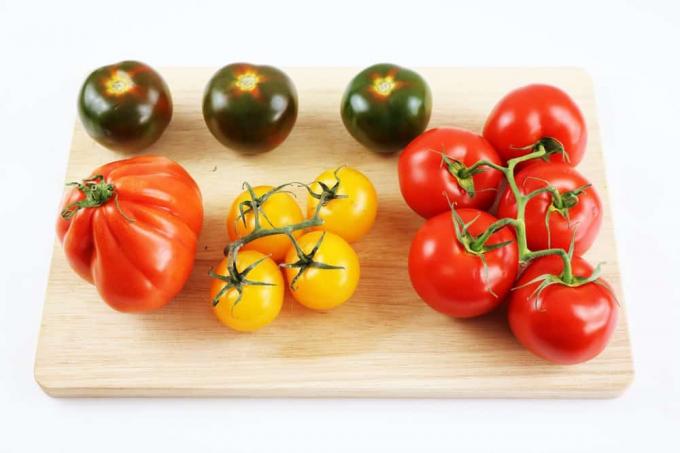
'Mexican Honey Tomato'
This old variety with its very aromatic fruits should not be confused with the commercially available 'honey tomatoes'. The latter are non-seed hybrids. The 'Mexican honey tomato' is very vigorous and productive, but should be cultivated in a greenhouse protected from wind and weather. It makes sense to let this tomato climb up a trellis in multiple shoots. The honey-sweet fruits, up to three centimeters in size, can be harvested from mid-July.
'ox heart'
There are various 'Oxenherz' tomatoes, all of which typically produce very large and heavy fruits - typically these are up to 15 centimeters tall and weigh up to a kilogram. Oxheart tomatoes have few seeds and quite firm flesh. The fruit-bearing shoots should be supported as much as possible so that they do not break or buckle under the load. If you are cultivating in a greenhouse, you can also fix it with a pole above the plants. All known varieties probably go back to a breed imported to America from Kazakhstan in 1901.
Recommended 'Ochsenherz' varieties:
- 'cur de buf'
- 'Cuore di bue'
- 'Olympic Flame'
- 'Orange Russian'
- 'Red Peach' and 'White Peach'
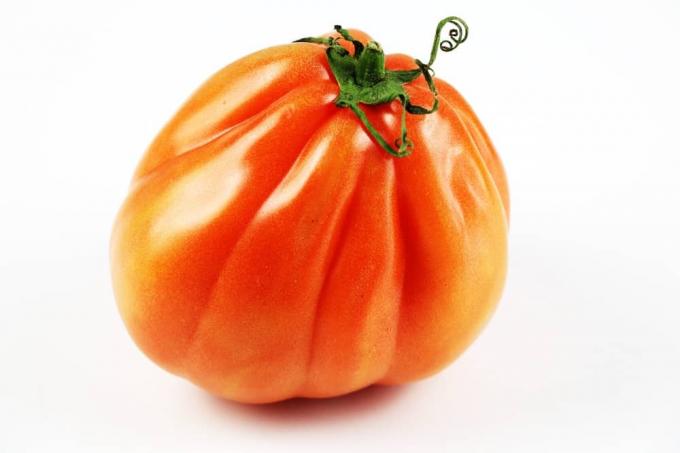
These are two very special stick tomatoes whose fruits are covered with a thick, soft, hairy skin. The varieties, which grow up to two meters high, are among the mid-late to late varieties. The first fruits do not ripen until the beginning of August. On the other hand, the harvest lasts until about mid-October, even with outdoor cultivation. The tomatoes are very aromatic with a fruity, slightly sweet taste. The thick shell is very soft.
Tip:
There are few hairy tomato varieties, but they should always be cultivated with rain protection. Experience has shown that they are quite susceptible to brown blight and late blight.
'Russian travel tomato'
This very unusual tomato variety was probably already cultivated by the Mayas in Guatemala. However, it is known from Russia, where it is taken along as provisions, especially when traveling on the Trans-Siberian Railway. What is special about this tomato is its curious shape: it looks like several tomatoes have grown together. The individual pieces of fruit can be broken off from each other. The travel tomato grows up to two meters high and is best grown as a multi-shoot tomato.
'tigerella'
The origin of this very old stick tomato is not exactly certain, but it probably comes from Russia. 'Tigerella' is very robust and vigorous. The plant, which grows up to two meters high, branches luxuriantly and can easily be grown in multiple shoots. The fruity-sweet tasting fruits are medium-sized, red with yellow stripes and ripen from mid-July. The variety does best in a greenhouse, but can also be grown outdoors if well protected from rain.
'Whippersnapper'
This strain, originally from England, is perfect for cultivation in pots, window boxes or hanging baskets - the plant only grows to about 40 centimeters high. The fruits are about one to two centimeters in size, are red, round to oval and have a fruity-sweet taste. In contrast to many other balcony tomatoes, 'Whippersnapper' (which translates as 'Three Cheese High') ripens very early and has a long harvest time until the first frost.
 garden editorial
garden editorial I write about everything that interests me in my garden.
Learn more about tomatoes
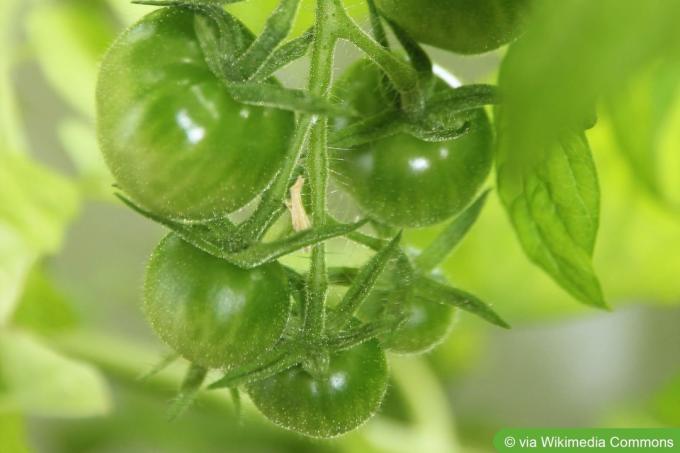
Mexican Honey Tomato: Taste & Cultivation
With the "Mexican honey tomato", hobby gardeners can bring a particularly sweet tomato variety into their garden. Due to its low acidity, it is one of the most popular sweet tomatoes and at the same time very easy to care for.
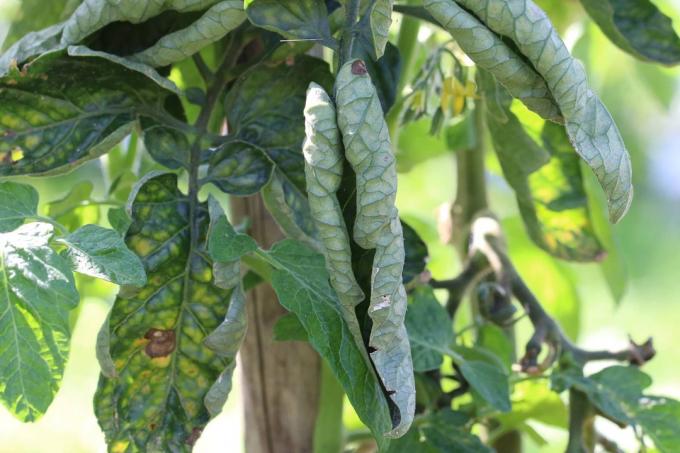
Tomato leaves curl: what to do?
There are many causes of curled leaves on tomato plants. Some are harmless, others can ruin crops. So waiting is not an option. Like a detective, you must search for clues. And then, if feasible, tailor-made countermeasures. Here's what to do when tomato leaves curl.
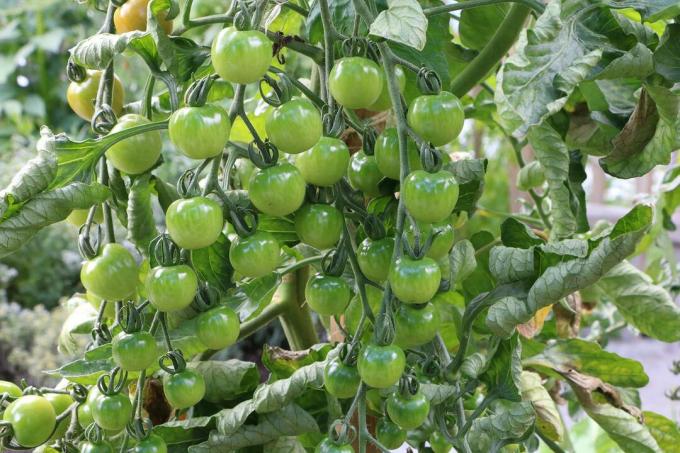
Fertilize tomatoes: how often, when and with what?
Tomatoes need a consistently high amount of nutrients for the development of flowers and fruits. In addition to choosing the right fertilizer, the amount and frequency also play an important role. All essential information for an optimal dosage can be found here.
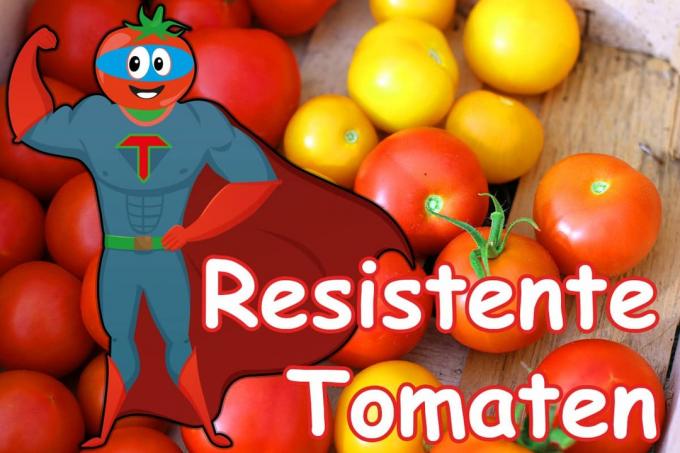
11 resistant tomato varieties defy rain and disease
Tomatoes are considered to be relatively easy to care for, but rain and numerous diseases can bother them. Fortunately, there are numerous tomato varieties that are resistant to many dreaded tomato diseases. We present the most popular specimens in this article.
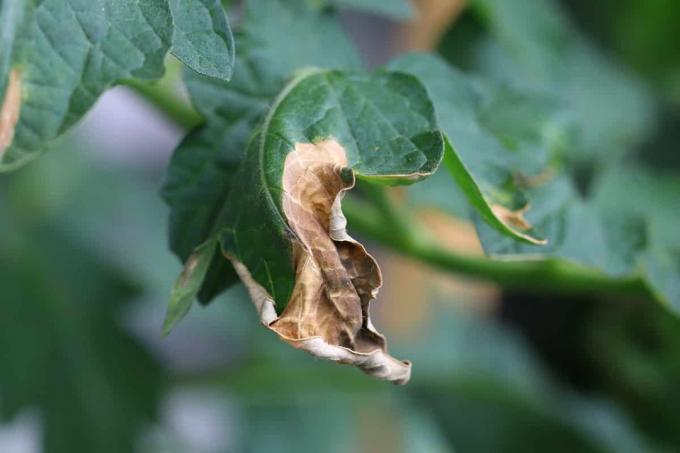
Control late blight and late blight in tomatoes
If pathogens of brown blight and late blight have settled on tomato plants, there is little hope of successful control. Home remedies and mechanical interventions only make sense in the early stages. It is all the more important that you prevent infections in a targeted manner through care measures.

How healthy are tomatoes? Information on calories, nutritional values & Co.
Snack healthy? The tomato makes it possible! Find out here why the red fruit should end up on the plate more often!
